The composer shares specialised string techniques that feature on a new album of string quartet works
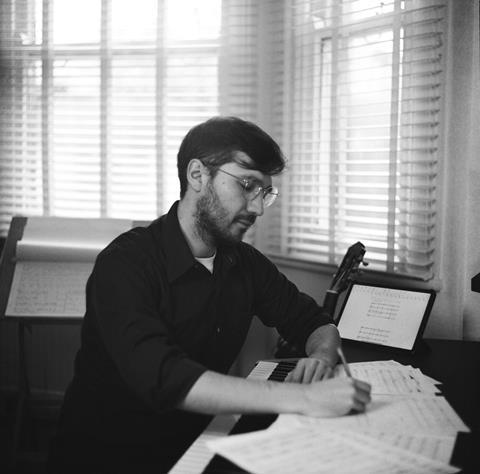
Discover more Featured Stories like this in The Strad Playing Hub
As a kid playing with my toy figurines, I often found myself immersed in creating narratives and inventing mechanisms to resolve. This fascination seamlessly transitioned into music as I began to learn an instrument and now I enjoy that same playfulness when it comes to composing whether on traditional ones or toy instruments. I love embracing the self-discovering nature of this intuitive approach.
Since I am not a professional performer, I like to view instruments simply as sounding objects, free from the weight of their historical traditional language and rigorous technique required for their optimal performance. I do this exploration to see what creative possibilities may arise. The music I write is often driven by the physicality of sound and by my direct engagement with its source. It is from this process that my initial composition ideas often originate to express the drama, sarcasm, nostalgia, euphoria, sadness, joy, etc.
This is the main approach behind the music of my upcoming album Cuerdas y Rugidos (Strings and Roars) featuring Brompton Quartet, Alkyona Quartet and ensamble f(r)actura. As the owner of a very basic violin and a cello, I was interested in the sounds I was capable of producing, i.e. experimenting with different parameters such as bowing pressure, position, contact point, angle and bowing on different surfaces of the instrument. Simultaneously, I was interested in exploring the sounds I could create with my voice while playing the instrument. I aimed to enrich the string textures by pairing whistling with high string harmonics and matching airy vocal sounds with the white noise produced by bowing the surface of the instrument.
The sounds obtained in this experimentation constitute the sound palette of my string quartet no.1 ‘Camanchaca’, featured in my album and collaborating with the Brompton Quartet. The word camanchaca refers to a dense, cold, and persistent type of fog that appears along the seashore on the coast of Chile. The word originates from the native Aymara language and translates to ‘darkness’ due to its density.
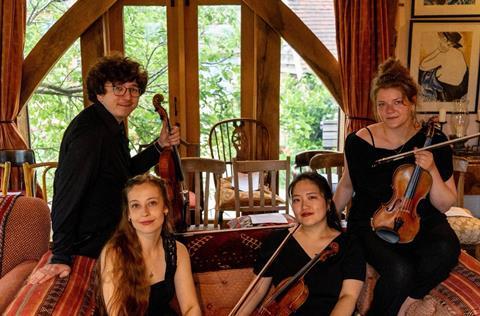
Camanchaca tells the story of the things I have witnessed from my room window where I grew up, overlooking the sea in a tiny fishing village on the coast of Chile. From this spot, I would see the camanchaca fog in the mornings appearing in the bay, overtaking the whole landscape, sometimes so dense that it felt like being inside a cloud. Through this same window, I have seen perhaps a hundred beautiful full yellow moons reflecting on the sea and images of genuine peace etched into my memory since childhood.
From this window, I also witnessed the disaster and violence of the earthquake and tsunami that occurred on the night of 27 February 2010 in Chile, which had a magnitude of 8.8 on the Richter scale. That night, there was a full moon. I have this ‘Hollywood-esque’ image in my mind of witnessing a gigantic wave towering above a five-storey building.
Little is said of the ‘sound imagery’ associated with earthquakes and tsunamis such as the shaking of objects, the crunching of walls, the low roar that emanates from the ground before an aftershock, etc. From this particular experience, the sounds of wooden fishing boats smashing against the breakwater wall which echoed through the whole night, remained vividly in my mind.
Musically, in this work, I aimed create a sound collage of these contrasting elements. On one hand, for the ‘camanchaca’-like foggy textures, I used a mix of bowing techniques that depict air through white noises, such as bowing on the bridge or on the c-bout (waist) of the cello, as well as circular bowing on a muted string. Simultaneously, I asked performers to whistle and produce airy sounds with their voices to enrich and thicken the texture.

The violent sounds of the earthquake and tsunami are represented through raw-sounding gestures such as the cracking sound of a steady slow overpressure bow on the muted low C string in the cello, rapid 4-string arpeggios in fortississimo dynamic, extreme bow overpressure, and gradually detuning the C string in the cello to a point where only a rattling, pitchless sound is heard.
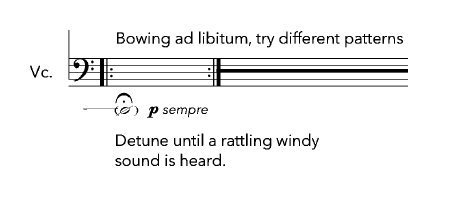
In same way, I have explored different sounds in my work ‘Three Chants for Assembling an Oboe’, for oboe and string quartet, also featured on the album and made in collaboration with the soloist José Luis Urquieta and ensamble f(r)actura from Chile. This composition explores how different oboe sonorities can blend with string sounds, creating contrasting textures ranging from fierce energy to serene lyricism.
In the first movement titled ‘Body’, for example, I experiment with the rattling and distorted sound produced by the as-fast-as-possible tremolo and slow sustained bow on the loose, almost pitchless, IV of string of each of the four instruments. These gestures are nuanced with different levels of bow overpressure such as light, normal, overpressure, extreme overpressure bowing. To indicate these overpressure changes, the following symbology is given for each of level of pressure.
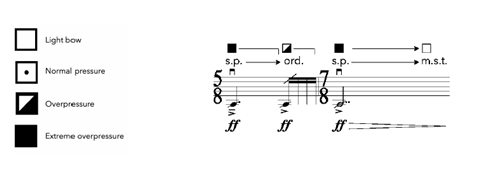
This texture is thickened by the string players producing random fast gibberish consonant sounds of ’t’ ’k’ and ’s’ with whispered voice, and is combined with the oboist producing rapid tongue pizzicati and ‘poco all tromba’ double tonguing without the reed, directly inside of the instrument.
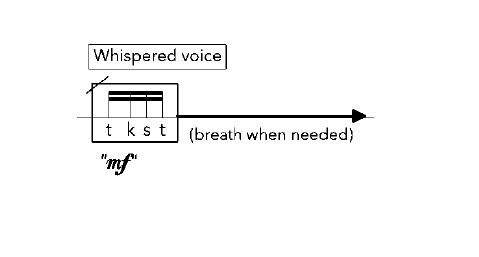
Similarly, different bow contact points are used to achieve particular timbre like bowing with the wood and hair of the bow at the same time in order to produce a velvety sound. By the end of the movement, the tuning of each string instrument,
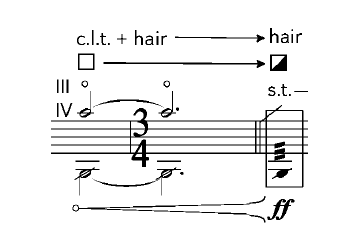
All of these elements mentioned above traverse back and forth throughout the three string works that comprise the album Cuerdas y Rugidos, coexisting with hints of melodies and rhythmic material. They explore the string quartet’s possibilities, ranging from the highest harmonic possible on the 1st string of a violin and the whistling of performers, to the bottom, rattling, windy sound of a detuned fourth string on the cello.
Cuerdas y Rugidos is released on 14 June on Sello Modular – there is a free launch event on 10 June at the St Pancras Clock Tower. The Carice Singers will premiere Anibal Vidal’s Just a Déjà vu Cariño at Spitalfields Festival on 2 July.
Read: Victor Julien-Laferrière on four must-know cello works by female composers
Read: Cellist Colin Alexander: how I notate improvisations
Read more Featured Stories like this in The Strad Playing Hub
The number one source for playing and teaching books, guides, CDs, calendars and back issues of the magazine.
In The Best of Technique you’ll discover the top playing tips of the world’s leading string players and teachers. It’s packed full of exercises for students, plus examples from the standard repertoire to show you how to integrate the technique into your playing.
The Strad’s Masterclass series brings together the finest string players with some of the greatest string works ever written. Always one of our most popular sections, Masterclass has been an invaluable aid to aspiring soloists, chamber musicians and string teachers since the 1990s.
American collector David L. Fulton amassed one of the 20th century’s finest collections of stringed instruments. This year’s calendar pays tribute to some of these priceless treasures, including Yehudi Menuhin’s celebrated ‘Lord Wilton’ Guarneri, the Carlo Bergonzi once played by Fritz Kreisler, and four instruments by Antonio Stradivari.













































No comments yet